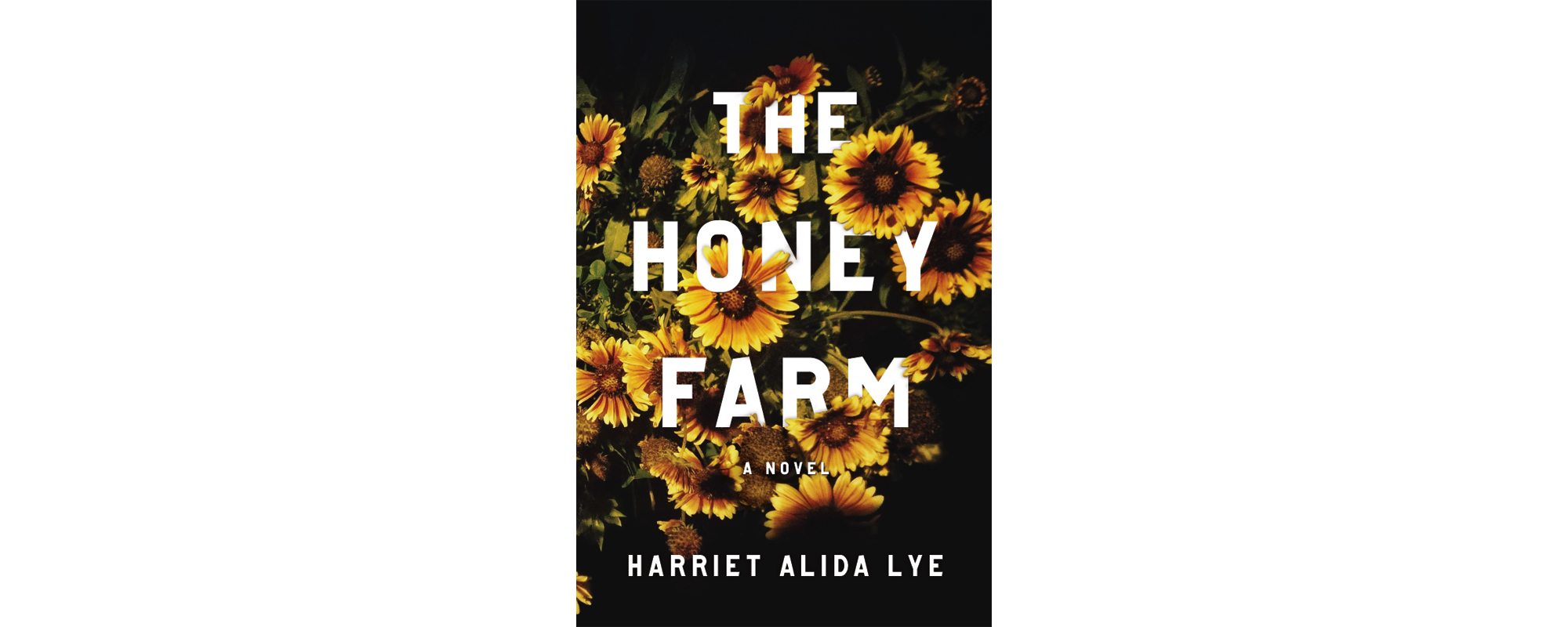 Harriet Alida Lye’s debut novel begins with a swarm of bees. More specifically, it begins with a one-word command: “Listen.” This is appropriate, because over the course of The Honey Farm’s propulsive, occasionally frustrating narrative, the ubiquitous bees that form a kind of leitmotif in the story are repeatedly delineated according to the sounds they make. In one instance, the bees emit a “dull buzz [that] turns into a vacuuming roar”; elsewhere their noise is likened to “the morning call of a muezzin” and “a storm on the horizon.”
Harriet Alida Lye’s debut novel begins with a swarm of bees. More specifically, it begins with a one-word command: “Listen.” This is appropriate, because over the course of The Honey Farm’s propulsive, occasionally frustrating narrative, the ubiquitous bees that form a kind of leitmotif in the story are repeatedly delineated according to the sounds they make. In one instance, the bees emit a “dull buzz [that] turns into a vacuuming roar”; elsewhere their noise is likened to “the morning call of a muezzin” and “a storm on the horizon.”
Beyond these aural references, the bees function as a symbolic touchstone in the book – their social hierarchy (queen, drones, and workers) reflects the interpersonal relationships among Lye’s motley cast of characters. Cynthia, who owns the titular farm outside of Smooth Rock Falls in northern Ontario, is facing a drought and needs help to keep her enterprise afloat. She settles on the notion of turning her property into a kind of ad hoc artists’ commune: she will provide free room and board and a space to create, in exchange for manual labour during the busy summer months. Of the 10 aspiring young artists who converge on the farm, the two who occupy most of the space in the novel are Silvia, a would-be poet on the run from her parents’ strict religious household, and Ibrahim, a painter.
Cynthia, herself a poet, gravitates toward Silvia for reasons that become clear as the story unfolds; Silvia, meanwhile, enters into a relationship with Ibrahim. When Silvia becomes pregnant, the narrative reduces to a power struggle between the young woman and the matriarch of the farm, with the dewy-eyed painter caught in the middle.
Much of the way this plays out feels overdetermined, in no small measure because of the heavy-handed symbolism inherent in the farm’s colony of bees. This is particularly apparent in a sequence involving Cynthia and Silvia, in which the former tutors her young charge in the practice of “requeening” – replacing a defunct queen bee with a new one. Without a queen, we are told, the colony will perish; but it is also necessary to dispose of one queen before replacing her with another, since the colony cannot function with two queens. “They’d fight each other to the death,” Cynthia says. This is followed by a note of foreshadowing that clangs a bit too discordantly: “Later Silvia will learn that it’s often the virgin queen who defeats the incumbent monarch, but not always.”
There is a lot of this in part one of the book, which accounts for roughly two-thirds of the whole. Silvia’s devout religious upbringing is brought to bear in what appears to be a series of Biblical plagues that unfold: the water supply turns blood red; frogs from the local lake descend on the farm; and an outbreak of lice afflicts the residents. While all of these phenomena may have reasonable explanations, their allegorical nature is nevertheless inescapable. Likewise Silvia’s realization that she is pregnant: a virgin before she met Ibrahim, the two have used condoms during sex, so the pregnancy is unexpected, to say the least. Here again, there is at least a hint of something deeper at work than a simple failure of prophylactic birth control.
There’s a lot going on here, and Lye keeps the narrative moving at a brisk clip with short, dialogue-heavy chapters that rarely run more than two or three pages. The story resolves itself in the second part, which unfolds after the other residents (many of whom are never really developed as characters in any case) have returned to their various homes, leaving the central trio to play out their power games as the birth of Silvia’s baby approaches. The balance of the novel exemplifies the lesson Silvia learned in her high school drama class: all characters are motivated by either love or power. It is perhaps ironic that the figure in Lye’s book most closely associated with love as a motivating factor – Ibrahim – is also the most ineffectual.
Lye evokes gothic tropes and a rippling aura of foreboding that recall Shirley Jackson and Daphne du Maurier by way of the tortured Catholicism of Flannery O’Connor. But what is most deeply felt in the novel is Silvia’s struggle to come into her own as a poet and a woman. Afflicted by writer’s block throughout the course of her stay at Cynthia’s farm, Silvia never actually produces any poetry, while Ibrahim is fanatically productive (he is responsible for creating two overly symbolic expressionistic portraits of Silvia and Cynthia, the former unsubtly titled The Other Woman). “Forty paintings,” Silvia thinks. “And I’ve done nothing.” When Ibrahim suggests she is wrong, her response is cutting: “Incubating another life doesn’t count.”
Though The Honey Farm is replete with moments of portentous foreshadowing and high symbolism, the ending, when it arrives, impresses as being unexpected and ambiguous. The battle of wills between Cynthia and Silvia concludes on a note of contingency, with the bees from the novel’s opening hovering in the air “large as a hurricane.” The one moment of epiphany Silvia is allowed offers her what may be her only solace: a decisive break with her family past. “It was never about God at all, was it?” she asks. “God had nothing to do with it.”
 Contact us via email
Contact us via email
